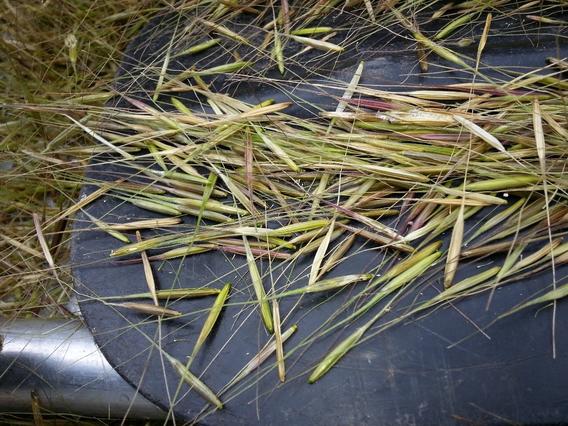
Manoomin is an indicator of ecosystem health in the Upper Midwest and is facing declines due to changing water levels. It is important to the livelihoods of Native people.
Challenge: Climate change further disrupts hydrology and changes are felt in precipitation in surrounding forests.
Principal Investigator(s):
- Daniel Larkin (University of Minnesota)
Co-Investigator(s):
- Crystal Ng (University of Minnesota)
- Michael Dockry (University of Minnesota)
- William "Joe" Graveen (Lac du Flambeau Band of Lake Superior Chippewa)
Cooperator/Partner(s):
- Eric Chapman (Lac du Flambeau Band of Lake Superior Chippewa)
- Robert Croll (Great Lakes Indian Fish & Wildlife Commission)
- Peter David (Great Lakes Indian Fish & Wildlife Commission)
- Kari Hedin (Fond du Lac Band of Lake Superior Chippewa)
- Thomas Howes (Fond du Lac Band of Lake Superior Chippewa)
- Melonee Montano (Great Lakes Indian Fish & Wildlife Commission)
- Nancy Schuldt (Lac du Flambeau Band of Lake Superior Chippewa)
- Sara Smith (College of Menominee Nation)
- Hilarie Sorensen (1854 Treaty Authority)
- Darren Vogt (1854 Treaty Authority)
Manoomin, or wild rice, is an essential, sacred species for Native people throughout the Upper Great Lakes region, who have relied on the plant for food and ceremony for hundreds of years. Manoomin is also important to non-Native people, who also harvest it and benefit from the wildlife sustained by it. Manoomin is an indicator of ecosystem health—if manoomin is healthy so is the surrounding ecosystem. Unfortunately, this aquatic grass has declined across much of its range due to multiple human-caused stressors, including changes to water levels in the lakes and streams in which manoomin grows. Climate change will further disrupt water levels, most directly through changes in precipitation, but also through climate-driven changes in surrounding forests, which affect water runoff to nearby lakes and streams through their use of water. Restoring and maintaining healthy manoomin ecosystems depends on understanding these interactions among climate, forests, and lake and stream levels.
The main goal of this project is to develop computer models that are informed by science and based on Native knowledge and experience. The computer models will explore changes in vegetation and water flows that will affect manoomin under a range of potential future climate conditions. In scenario planning workshops, tribal community members will discuss model outputs and develop management actions to mitigate and adapt to impacts. The proposed management actions will be put back into the models to understand how each action may affect manoomin ecosystems. Feeding real-world management plans back into the computer model ensures that the model becomes a useful tool for managing natural resources in the face of climate change. Findings will be co-developed with, and provide decision-making support for the partner tribes (Fond du Lac Band of Lake Superior Chippewa, Lac du Flambeau Band of Lake Superior Chippewa) and intertribal treaty organizations (1854 Treaty Authority, Great Lakes Indian Fish & Wildlife Commission), the many other tribes in the Great Lakes region that depend on manoomin, and federal and state agencies responsible for managing manoomin and other aquatic habitats.
Read more from the CASC Project Explorer.
